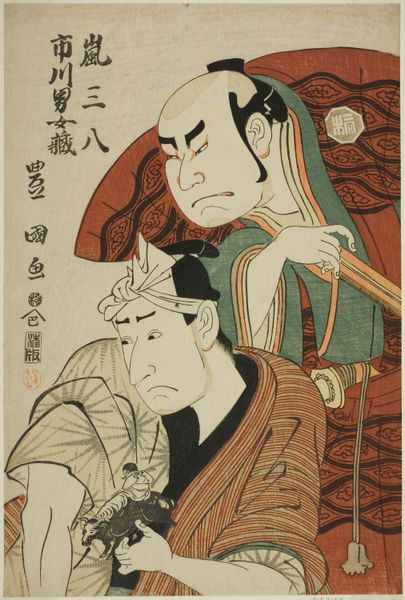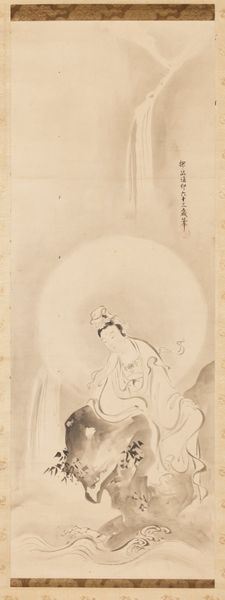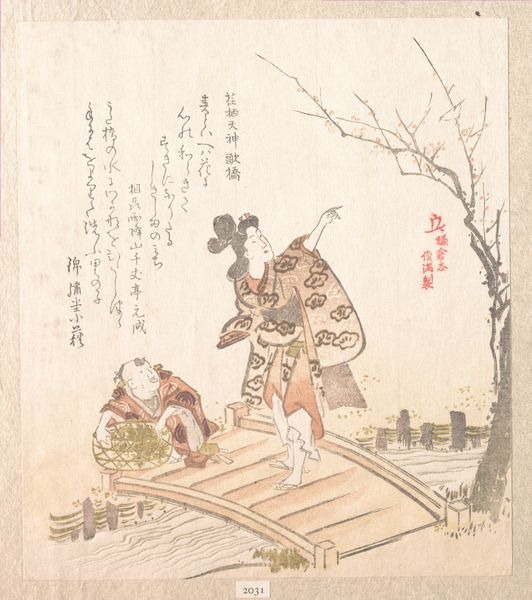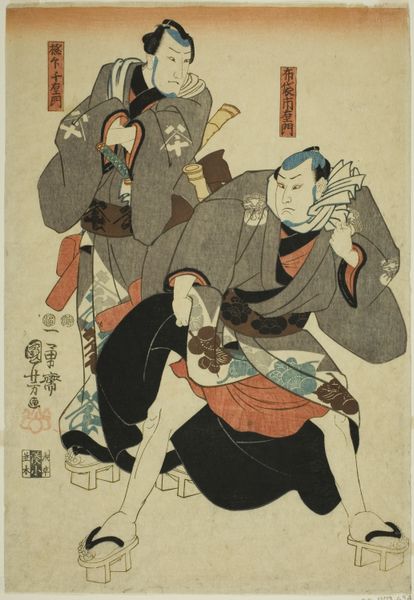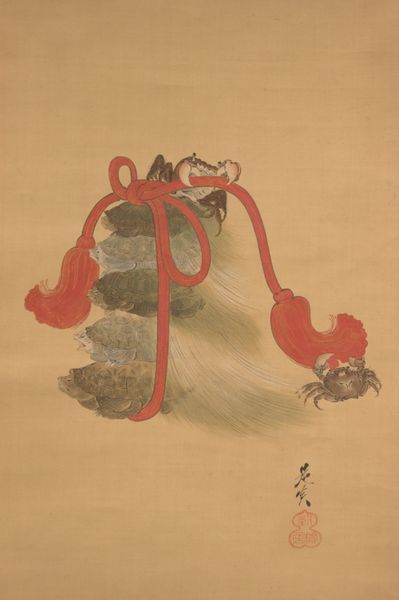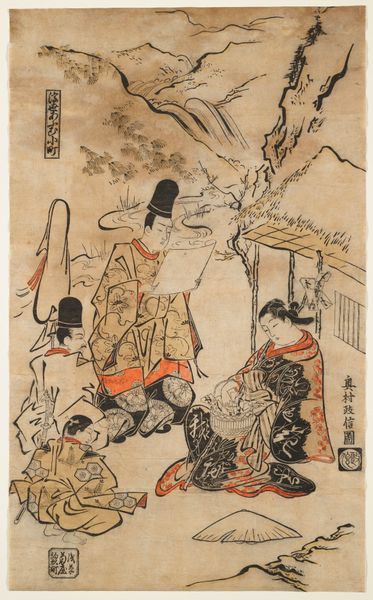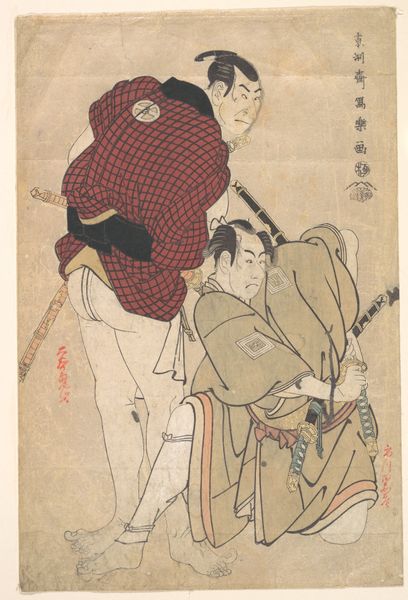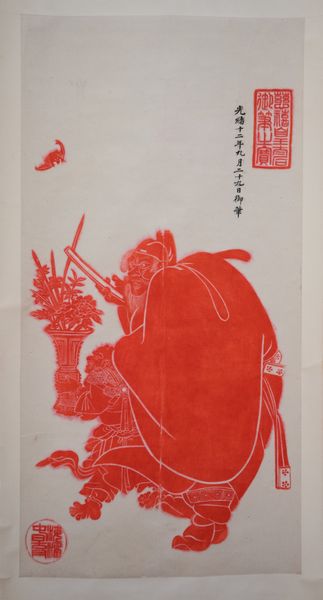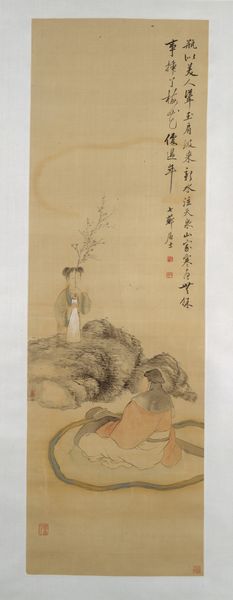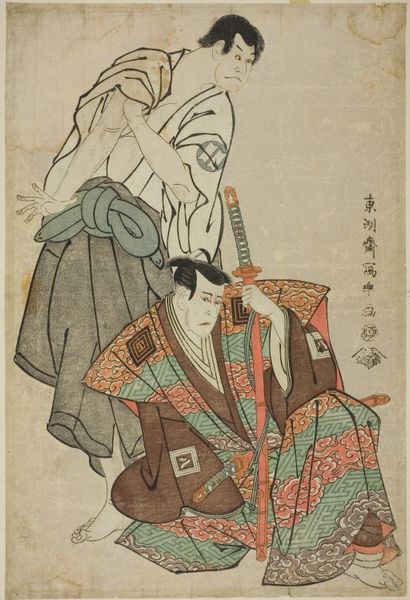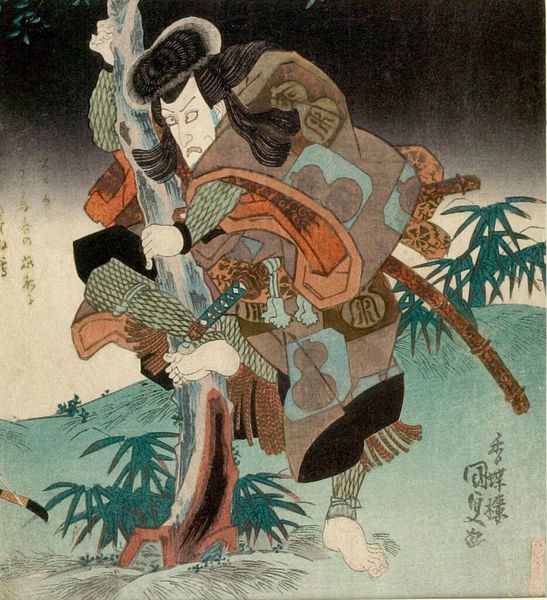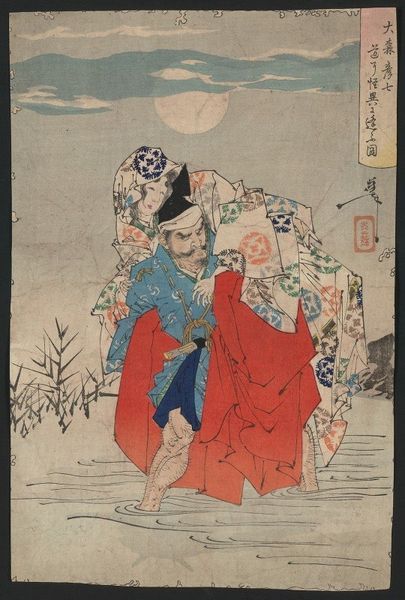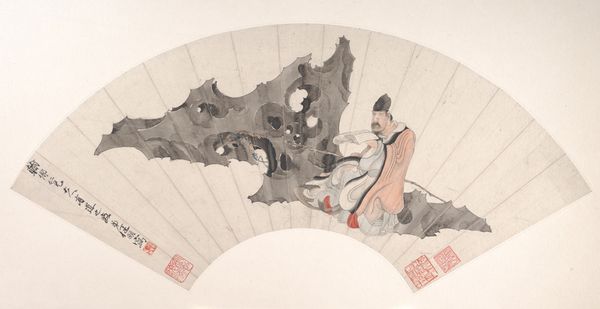
Zen Encounter- Niaoke Daolin and Bai Juyi c. 18th century
0:00
0:00
drawing, hanging-scroll, ink
#
portrait
#
drawing
#
narrative-art
#
asian-art
#
landscape
#
figuration
#
hanging-scroll
#
ink
#
orientalism
Dimensions: 45 1/2 × 19 3/4 in. (115.57 × 50.17 cm) (image)83 3/8 × 25 7/8 in. (211.77 × 65.72 cm) (without roller)
Copyright: Public Domain
Editor: So, this hanging scroll, "Zen Encounter- Niaoke Daolin and Bai Juyi," created around the 18th century by Soga Shōhaku, really strikes me with its ethereal quality. It’s as if the scene exists between the physical and spiritual realms. What visual clues reveal a deeper symbolic meaning within this artwork? Curator: Notice how the artist has placed Daolin, the Zen master, perched high in the tree. What might that placement suggest to you? Consider not just the physical elevation, but the symbolic implications. What does a tree typically symbolize across cultures? Editor: Well, the height gives him a sense of detachment, maybe? Trees often represent life, growth, connection to nature… wisdom, even. Is it suggesting that Daolin is elevated in wisdom, separate from worldly concerns? Curator: Precisely! And consider Bai Juyi's posture—bent over, seemingly troubled. The servant behind him offers a contrast, with a bemused expression. This sets up a fascinating visual and psychological dynamic. What do you think Bai Juyi is grappling with? The image encapsulates the weight of worldly concerns against the levity of enlightenment. Editor: So the visual contrast mirrors a philosophical one, about seeking meaning beyond the mundane. What do the birds mean? Are they significant to the cultural understanding? Curator: Ah, the birds! In many Eastern traditions, birds often represent freedom and spiritual ascent. Consider their placement near Daolin— are they drawn to him or representative of his enlightenment? Does it shift the emotional reading of the piece for you at all? Editor: It does – they suggest that enlightenment involves detaching from earthly troubles. It ties everything together—the posture, the placement…the entire symbolic composition. I never would have pieced that together! Curator: Indeed. Art provides visual pathways to unpack complicated meaning; looking at cultural and historical symbols enriches the entire reading experience.
Comments
minneapolisinstituteofart over 1 year ago
⋮
Legend has it that the famous Chinese poet Bai Juyi (772–846) once paid a visit to the Zen master Niaoke Daolin (741–824) and found the elderly monk sitting in a tree by a nest of magpies. The poet asked the monk about the essential meaning of the Dharma, or Buddhist teaching. The monk answered by quoting a scripture, the Precept Verse of the Seven Buddhas: “Shun all evil, perform every good.” To this, the poet exclaimed, “Even a three-year-old child knows this!” And the Zen master replied, “A three-year-old child may be able to say it, but even an 80-year-old man cannot do it.” Finally comprehending, Bai Juyi then built a Zen temple and devoted his life to Zen practice. In this painting of the famous encounter, the Japanese painter Soga Shōhaku shows a smiling Niaoke Daolin sitting high in a tree next to three magpies. The poet below, accompanied by an attendant, appears befuddled.
Join the conversation
Join millions of artists and users on Artera today and experience the ultimate creative platform.
